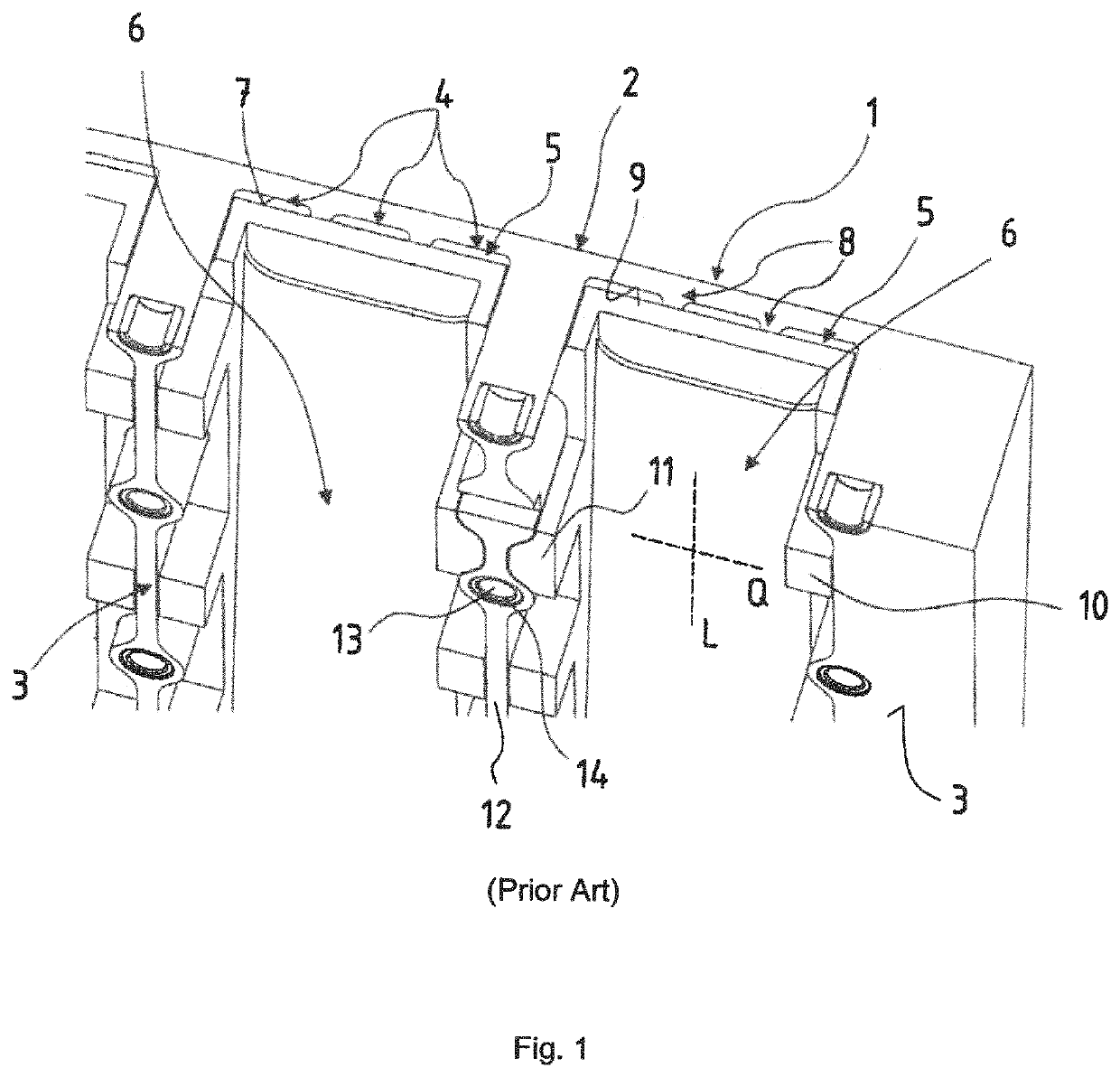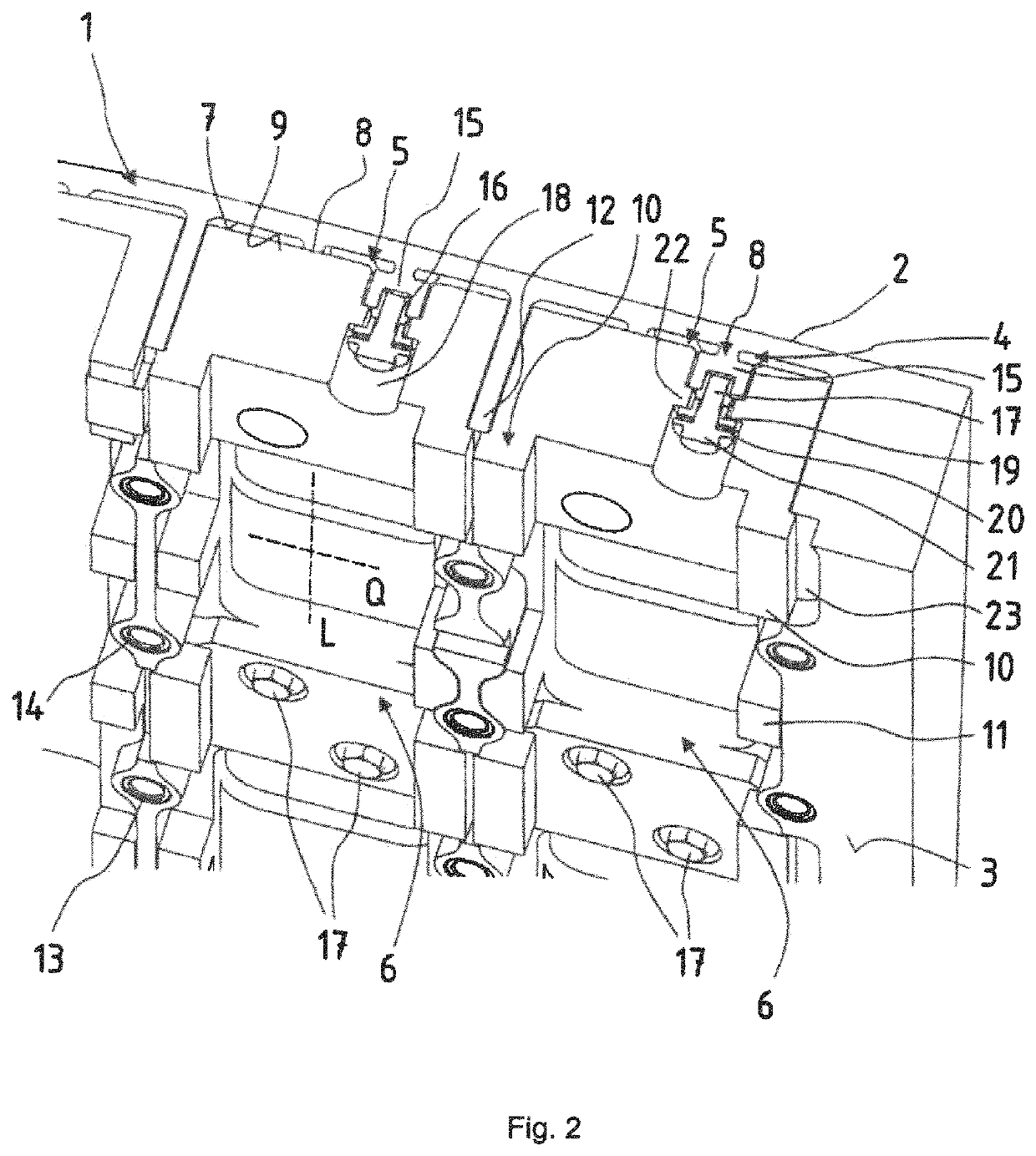Mould plate
- Summary
- Abstract
- Description
- Claims
- Application Information
AI Technical Summary
Benefits of technology
Problems solved by technology
Method used
Image
Examples
Embodiment Construction
[0033]FIG. 1 shows the prior art and serves to explain the technological background. It is not an embodiment for which protection is claimed. The invention is then explained in more detail with reference to an exemplary embodiment shown purely schematically in FIG. 2.
[0034]FIG. 1 shows in a perspective view a partial region of a mould plate 1 in partial cross-section. The reference signs used to explain the mould plate 1 in FIG. 1 are also used for components of substantially the same function in the mould plate 1 according to the invention as shown in FIG. 2.
[0035]The mould plate 1 in FIG. 1 has a casting side facing away from the viewer, and a rear side 2 facing the viewer. In the installation position, the rear side 2 rests on a support plate (not shown in detail). During casting operation, hot melt on the casting side 2 is cooled in that heat is extracted from the mould plate 1 and dissipated via cooling water conducted through cooling gaps 4, which in turn are situated inside c...
PUM
| Property | Measurement | Unit |
|---|---|---|
| Thickness | aaaaa | aaaaa |
| Length | aaaaa | aaaaa |
Abstract
Description
Claims
Application Information
 Login to View More
Login to View More - R&D
- Intellectual Property
- Life Sciences
- Materials
- Tech Scout
- Unparalleled Data Quality
- Higher Quality Content
- 60% Fewer Hallucinations
Browse by: Latest US Patents, China's latest patents, Technical Efficacy Thesaurus, Application Domain, Technology Topic, Popular Technical Reports.
© 2025 PatSnap. All rights reserved.Legal|Privacy policy|Modern Slavery Act Transparency Statement|Sitemap|About US| Contact US: help@patsnap.com


